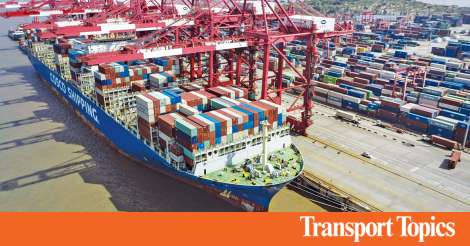Trump Proposes New Ship Fees to Challenge China
U.S. Proposes Fees to Counter China's Maritime Dominance

The Trump administration has proposed new fees targeting Chinese commercial ships to address China’s growing dominance in the maritime industry. The plan, outlined by the Office of the U.S. Trade Representative, aims to impose fees on Chinese-built vessels that transport traded goods. Additionally, it includes mandates requiring a portion of U.S. products to be transported on American vessels. This proposal follows a trade investigation initiated under the Biden administration, which found that China unfairly dominates the maritime, logistics, and shipbuilding sectors.
Impact on Shipping Costs and U.S. Shipbuilding
If implemented, these proposed fees could lead to increased shipping costs for American consumers. Higher fees on Chinese vessels may result in elevated prices for goods transported to the U.S. Furthermore, the effectiveness of these measures in restoring American shipbuilding capacity remains uncertain. Despite existing protections designed to promote U.S.-built and operated vessels, American shipbuilding has significantly declined. Currently, the U.S. ranks 19th globally in commercial shipbuilding, producing fewer than five ships annually, while China constructs over 1,700 ships each year.
China’s maritime dominance has surged dramatically, with its market share rising from less than 5% of global tonnage in 1999 to over 50% in 2023. The country controls 19% of the global commercial fleet and produces 95% of shipping containers. This dominance is attributed to low pricing and labor standards, which allow China to undercut competition. The U.S. trade office warns that reliance on Chinese maritime supplies poses economic security risks, especially in light of potential disruptions.
The proposed remedies, announced on February 21, are subject to public comment and review. They include service fees of up to $1 million for Chinese-built vessels entering U.S. ports. The administration also plans to implement escalating restrictions on the maritime transport of U.S. goods, starting with a requirement that at least 1% of American products be carried on U.S.-flagged and -operated vessels. This requirement would gradually increase to 15% over seven years, eventually mandating that these vessels be built in the U.S.
The commercial shipping sector is a critical leverage point for the U.S. in its trade relations with China. Any disruptions in this sector could lead to significant supply chain shocks, which the U.S. aims to avoid. While unions support these measures, retailers express concern that the additional costs will ultimately be passed on to consumers.
